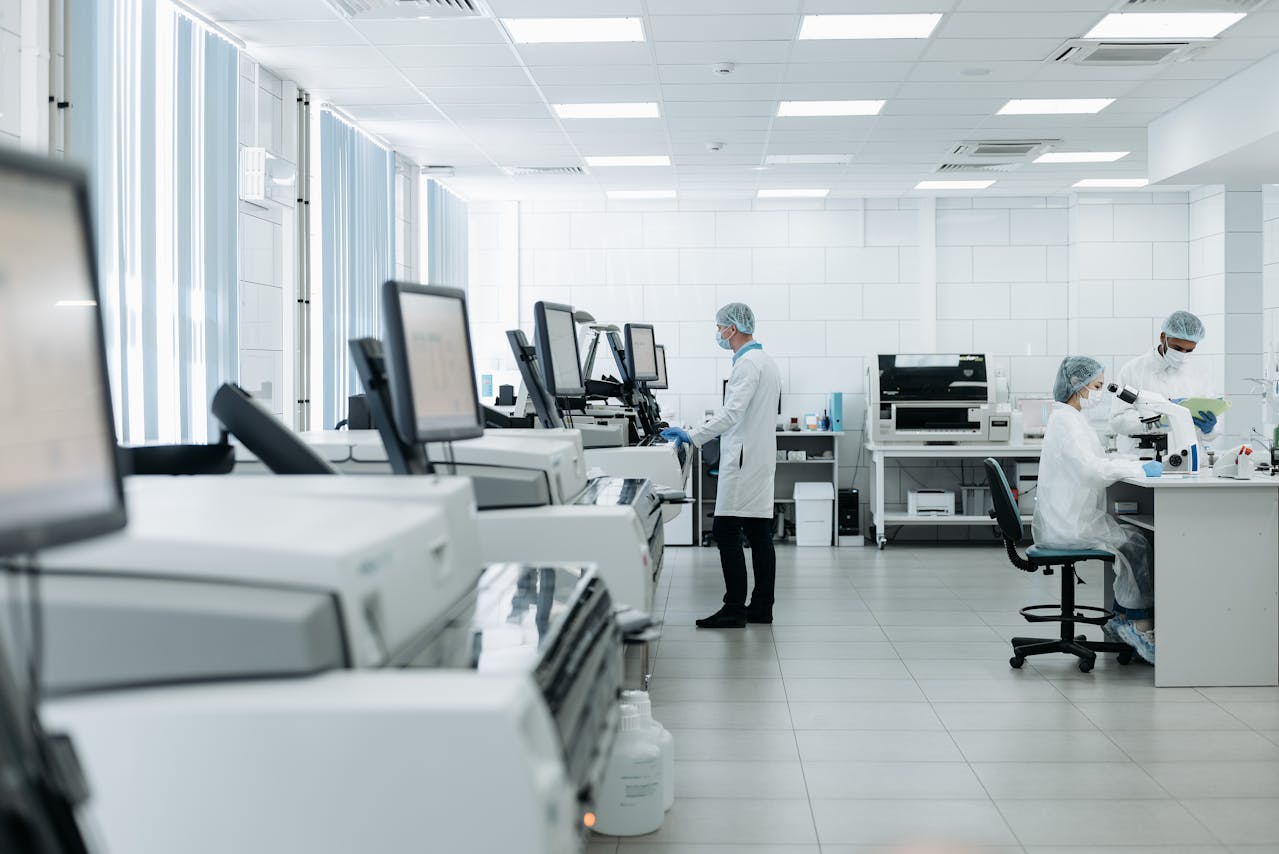Industries worldwide are experiencing a seismic shift. Advanced data analysis techniques now drive smarter workflows, from factory floors to customer service centres. This guide explores how modern technologies are reshaping business landscapes through intelligent automation and pattern recognition.
Take manufacturing, for instance. Firms like Caresoft Global Technologies use learning algorithms to enhance quality control, reducing defects by analysing production-line data in real time. Retailers similarly leverage these systems to personalise shopping experiences, while healthcare providers employ predictive models for faster diagnostics.
At its core, this transformation relies on processing vast datasets to identify trends. Machine learning models uncover hidden patterns, enabling businesses to optimise costs, streamline processes, and make decisions with unprecedented accuracy. These applications aren’t theoretical – they’re already delivering measurable results across sectors.
We’ll examine practical use cases, from predictive maintenance in logistics to customer behaviour analysis in e-commerce. You’ll discover how leading organisations integrate these tools to boost efficiency and competitiveness. Ready to explore the future of industrial innovation? Let’s dive in.
Key Takeaways
- Manufacturing sectors utilise intelligent systems for real-time defect detection and process refinement
- Retail personalisation strategies now depend on algorithmic analysis of consumer behaviour patterns
- Healthcare diagnostics benefit from predictive modelling that accelerates treatment planning
- Operational costs decrease through automated quality checks and maintenance forecasting
- Decision-making accuracy improves with data-driven insights from learning models

Introduction to Our Guide
The digital revolution is reshaping business operations at an unprecedented pace. From predictive maintenance to real-time data processing, organisations now harness computational power to refine workflows. This guide unpacks practical strategies for leveraging these shifts – no jargon, just actionable insights.
Overview of Industrial Transformation
Factories and retail chains alike now rely on intelligent systems to spot inefficiencies. Automotive manufacturers, for instance, use learning algorithms to detect microscopic defects during assembly. Retail giants analyse purchase patterns to predict stock demands weeks in advance.
These changes aren’t isolated upgrades – they’re part of a broader evolution. Energy firms employ sensor networks to optimise grid performance. Logistics companies automate route planning using historical traffic data. The common thread? Strategic adoption of machine learning operations to drive measurable outcomes.
Scope and Relevance of Machine Learning
Modern machine learning models excel where traditional methods falter. They process unstructured data – think customer feedback or equipment vibration logs – to uncover hidden opportunities. Pharmaceutical companies now accelerate drug discovery by 40% using these technologies.
Our guide explores these applications across manufacturing, healthcare, and retail sectors. You’ll discover how algorithmic analysis reduces production costs while boosting output quality. We’ll also examine ethical considerations, ensuring you gain a balanced perspective on implementing these tools effectively.
How Machine Learning Is Transforming Industry Operations
Cutting-edge computational methods are redefining traditional workflows across sectors. Organisations now achieve what manual processes couldn’t – identifying inefficiencies in milliseconds and adapting strategies dynamically. This shift isn’t limited to tech giants; even mid-sized enterprises leverage these tools to compete effectively.
Industry-wide Impacts and Opportunities
From automotive plants to pharmaceutical labs, intelligent systems deliver measurable improvements. BMW’s production lines, for instance, use learning models to predict equipment failures 72 hours in advance. Retailers like ASOS apply algorithmic analysis to personalise product recommendations, boosting conversion rates by 35%.
Insights into Current Trends and Future Directions
Three developments dominate 2024’s industrial landscape. First, digital twins now simulate entire factories, allowing risk-free scenario testing. Second, automated quality checks reduce human error in electronics manufacturing. Third, healthcare providers analyse patient data to predict treatment outcomes with 89% accuracy.
| Aspect | Traditional Approach | ML-Driven Approach |
|---|---|---|
| Quality Control | Manual inspections (5% defect miss rate) | Computer vision systems (0.2% miss rate) |
| Maintenance Strategy | Scheduled downtime | Predictive interventions |
| Customer Insights | Monthly sales reports | Real-time behaviour analysis |
These innovations create cascading benefits. Energy companies using smart grids report 18% lower distribution losses. Logistics firms achieve 22% faster deliveries through route optimisation. As artificial intelligence matures, we’ll see even tighter integration between physical operations and digital oversight.

Machine Learning In Manufacturing: Quality, Automation and Customisation
Modern production floors buzz with intelligent systems that think while they work. These advanced solutions tackle three critical challenges: maintaining flawless standards, handling monotonous jobs, and delivering bespoke products efficiently.
Enhancing Quality Control
Visual inspection systems now spot defects human eyes might miss. A leading automotive supplier reduced faulty components by 67% using machine learning algorithms that analyse production-line images in milliseconds. These systems compare items against 3D blueprints, flagging even 0.1mm deviations.
Automation of Repetitive Tasks
Robotic arms equipped with decision-making capabilities now handle intricate assembly processes. One electronics manufacturer automated 89% of soldering tasks through machine learning in manufacturing, cutting errors by 41%. Workers now focus on complex quality checks rather than mind-numbing repetitions.
| Task Type | Manual Completion | ML-Assisted Process |
|---|---|---|
| Component Sorting | 120 units/hour | 950 units/hour |
| Welding Accuracy | 92% precision | 99.6% precision |
| Defect Detection | 88% success rate | 99.3% success rate |
Customisation at Scale
Sportswear brands now produce unique shoe designs without slowing production. Advanced data processing handles custom orders by adjusting machinery settings in real-time. One factory achieves 15,000 personalised variants daily while maintaining 2% lower production costs than standard lines.
These innovations create ripple effects across operations. Predictive maintenance models slash equipment downtime by 73% in textile plants. Real-time data analysis helps balance batch sizes and material usage, proving smart factories aren’t just efficient – they’re adaptable.
Machine Learning In Retail: Data Analysis, Personalisation and Robotics
Retailers are quietly revolutionising their operations through smart data analysis. By blending customer insights with real-time inventory tracking, shops now make decisions that felt impossible five years ago. Let’s unpack how modern tools reshape everything from stockrooms to checkout experiences.
Advanced Data Analysis for Smarter Decisions
Imagine predicting next month’s bestseller before customers even know they want it. Retail giants like Walmart use learning algorithms to analyse purchase histories and weather patterns. This helps them stock shelves with umbrellas before rainstorms or sunscreen before heatwaves.
Dynamic pricing models adjust tags in real time based on demand. During holiday sales, these systems prevent overstocking while maximising profits. One fashion chain reduced clearance items by 40% using predictive analytics for inventory management.
Personalisation Techniques and Customer Insights
Ever wondered how online shops suggest perfect products? Amazon’s recommendation engine uses machine learning models that study browsing habits and past purchases. These algorithms identify patterns even seasoned marketers might miss.
Loyalty programmes now offer tailored discounts instead of generic coupons. A UK supermarket chain boosted repeat visits by 29% after personalising offers based on shopping basket data. Robotics also play a role – automated kiosks in stores greet regulars by name and highlight favourite items.
Behind the scenes, warehouse robots sort and pack orders 3x faster than human teams. Ocado’s automated fulfilment centres process 260,000 weekly orders with 99.3% accuracy. This blend of technology and insight creates shopping experiences that feel both efficient and uniquely personal.

Machine Learning In Healthcare: Diagnostics, Treatment and Prevention
Healthcare providers are achieving breakthroughs once thought impossible. Intelligent systems now analyse complex medical information faster than any human team. This shift enables earlier interventions and treatments tailored to individual biology.
Improved Diagnostic Accuracy
Google’s imaging algorithms detect lung cancer with 94% accuracy – outperforming many radiologists. These models cross-reference thousands of scans to spot subtle patterns. They reduce misdiagnoses by comparing new cases against global data networks.
Enhanced Personalised Treatment Plans
Insilico Medicine uses machine learning to slash drug development timelines. Their systems analyse genetic profiles to predict which compounds will work for specific patients. This approach helped identify a fibrosis treatment candidate in just 46 days.
| Diagnostic Aspect | Traditional Method | ML Approach |
|---|---|---|
| Cancer Detection | 82% accuracy | 95% accuracy |
| Treatment Planning | 4-6 weeks | 48 hours |
| Risk Prediction | Basic health metrics | 5,000+ data points |
Preventative care benefits too. Learning tools flag diabetes risks 3 years earlier by tracking blood sugar trends and lifestyle factors. Hospitals using these technologies report 30% fewer emergency admissions through early interventions.
Industrial Impacts and Additional Technologies
Factories are getting smarter, not just busier. Two innovations stand out in modern industrial settings: predictive maintenance tools and digital twin development. These solutions tackle operational challenges while future-proofing production environments.
Predictive Maintenance and Operational Efficiency
Unplanned downtime costs manufacturers £150 billion annually. Smart systems now analyse equipment vibrations and temperature data to spot anomalies. Rolls-Royce’s jet engines, for example, send real-time performance metrics to learning algorithms that predict part failures with 91% accuracy.
Early warnings let teams schedule repairs during natural breaks. A study by Deloitte shows this approach reduces downtime by 45% in automotive plants. The real magic? These machine learning models improve their predictions as they process more operational data.
Digital Twin Development and Process Optimisation
Imagine testing factory layouts without moving a single conveyor belt. Siemens’ digital twins simulate entire production lines, identifying bottlenecks before physical changes occur. These virtual replicas use machine learning to analyse historical and real-time inputs, optimising workflows dynamically.
| Metric | Traditional Approach | ML-Enhanced Method |
|---|---|---|
| Downtime Reduction | 12% improvement | 41% improvement |
| Simulation Accuracy | 78% match | 94% match |
| Implementation Cost | £230,000 average | £148,000 average |
Adoption rates tell the story. Research shows 68% of manufacturers plan to implement digital twins by 2025. These tools don’t just prevent errors – they create opportunities for continuous learning and refinement across industrial ecosystems.

Navigating Challenges: Data, Ethics and IT/OT Convergence
Businesses face complex hurdles when implementing advanced technologies. Balancing innovation with responsibility requires careful navigation of privacy concerns and system compatibility. Let’s explore solutions for maintaining trust while scaling operations.
Addressing Data Privacy and Ethical Standards
Protecting sensitive information remains paramount. A 2023 healthcare breach exposed 1.5 million patient records due to poorly configured machine learning models. This incident underscores why anonymisation techniques and strict access controls matter.
Ethical frameworks guide responsible AI development. The EU’s AI Act mandates transparency in algorithmic decision-making. Companies must audit their learning systems regularly to prevent biased outcomes. One retail chain faced backlash after its recommendation engine prioritised higher-income neighbourhoods.
Integrating IT and Operational Technology
Merging office systems with factory equipment creates both opportunities and headaches. A major automotive manufacturer halted production for 8 hours when their ERP system couldn’t communicate with assembly-line sensors. Seamless integration requires standardised protocols and cross-trained teams.
| Challenge | IT-Centric Approach | Integrated Solution |
|---|---|---|
| Downtime Events | 12 incidents/month | 3 incidents/month |
| Incident Response | 4.7-hour resolution | 1.2-hour resolution |
| Scalability | Limited to 3 sites | Supports 27 sites |
Cybersecurity becomes critical as networks expand. Honeywell’s machine learning-enabled threat detection reduces phishing attacks by 63% in smart factories. Regular penetration testing and encrypted data pipelines help maintain operational integrity while fostering innovation.
Conclusion
A silent revolution in operational efficiency is rewriting corporate playbooks worldwide. From assembly lines analysing data streams to clinics predicting treatment outcomes, intelligent systems now drive measurable improvements. We’ve explored how machine learning refines quality control, personalises customer journeys, and accelerates medical breakthroughs.
These tools enable businesses to spot patterns invisible to human teams while adapting workflows in real time. Early adopters across manufacturing, retail, and healthcare sectors already report 30-45% gains in productivity and accuracy. Those hesitating risk falling behind as competitors harness learning models to cut costs and boost innovation.
The road ahead promises even smarter integration. Expect machine learning to power self-optimising supply chains and hyper-personalised services. Ethical frameworks and robust data governance will remain crucial as these technologies evolve.
Now’s the moment to act. Whether refining production processes or enhancing patient care, intelligent systems offer transformative potential. Embrace continuous learning, invest in upskilling teams, and join leaders shaping tomorrow’s industrial landscape.



